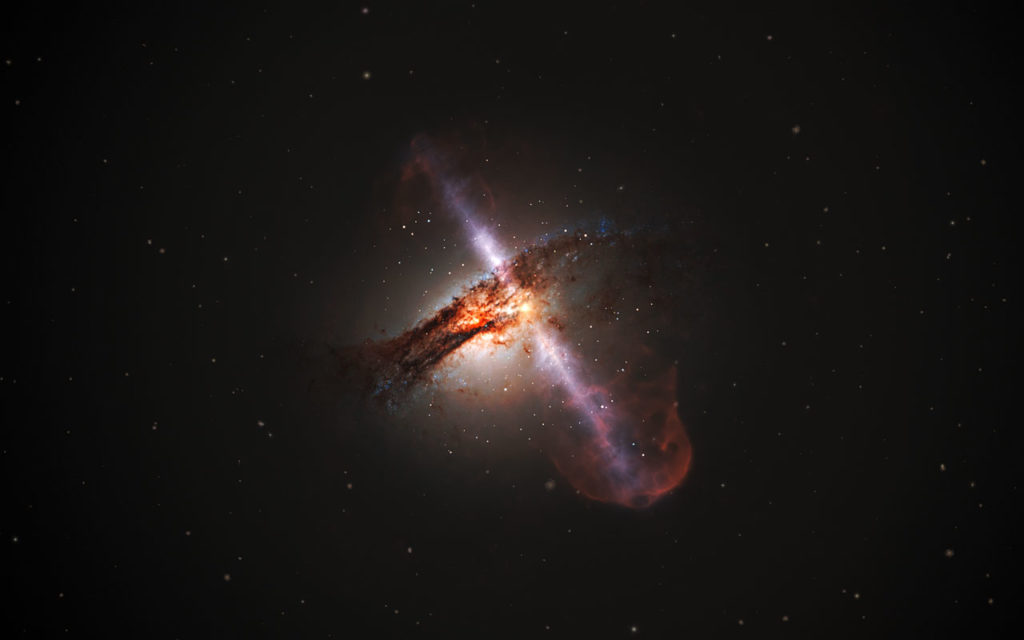Astronomers have uncovered a supermassive black hole, weighing 17 billion suns, in the middle of nowhere. This nearly record-breaking supermassive black hole is in the center of a small galaxy cluster, which is a small town by universe standards.
At the center of a given galaxy, there resides a supermassive black hole. To be considered a supermassive black hole, a black hole must be at least hundreds of thousands times heavier than our sun. There is a relationship between the size of the galaxy and the size of its supermassive black hole in its center – very large galaxies will have very large supermassive black holes.
Until now.
The current record holding supermassive black hole tips the scale at 21 billion suns and it lies at the center of the crowded Coma galaxy which has over 1000 galaxies. But, Dr. Jens Thomas and Dr. Chung-Pei Ma have discovered a new supersized black hole located in the cosmic boonies, the center of the elliptical galaxy NGC 1600. This gigantic black hole is weighing in at a massive 17 billion suns!
There are quite a few galaxies that are similar in size to NGC 1600, and all of astrophysics models estimate their central supermassive black hole to be 10 times less massive than the one found by Dr. Thomas and Dr. Ma.

Image adapted from ESA/Hubble [CC BY 4.0 (http://creativecommons.org/licenses/by/4.0)], via Wikimedia Commons
Researchers are surprised by the black hole’s monster size. The idea to explain the size is that this black hole formed long ago, when the universe was smaller (the universe is constantly expanding) and thus galaxy interactions occurred more frequently. When two galaxies merge, their central supermassive black holes begin to orbit one another, falling closer and closer together. Stars near the new binary black hole fall into the black holes and the black holes continue to devour all nearby stars as they slowly grow into each other. Binary black holes of this form will eventually merge together to form an even larger black hole.
Nonetheless, Dr. Thomas’ and Dr. Ma’s discovery has left us with questions. Most of the gas of NGC 1600, the supermassive black hole’s host galaxy, was consumed long ago when this black hole was radiating as a glowing quasar. Now, this black hole is quiet and dark making it difficult to see with our telescopes.
Does this mean that more of these giants lay sleeping in the small towns of our universe?
We will check our telescopes, study, observe, and let you know.


